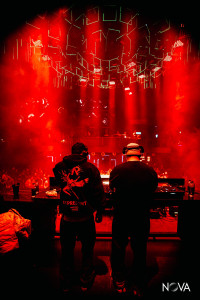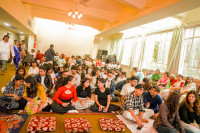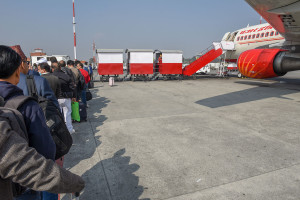Culture & Lifestyle
Feminist history through pictures
‘The Public Life of Women’, a photobook by Nepal Picture Library, features more than 500 images collected over five years.
Post Report
Nepal Picture Library (NPL) celebrated the launch of the photobook ‘The Public Life of Women’ through a symposium with the same title at Staff College, Jawalakhel, on Friday.
For the past five years, NPL has been collecting photos and historical records to create a visual archive of feminist stories in Nepal. ‘The Public Life of Women’, initially presented as an exhibition, highlights a selection from this collection. The photobook showcases moments from the past to emphasise how being public has been a vital feminist strategy in Nepal.
Writer Khagendra Sangroula said of the photobook, “The crucial role of women in Nepal’s social and political uprisings, spanning from the Rana regime and Panchayat era to the era of multi-party democracy and Maoists insurgency, has been distinctly illustrated.”
The symposium started with a discussion on ‘Women’s Histories and Their Infrastructures’, with speakers Sita Ojha, Archana Thapa and Indira Dali, moderated by Rita Shah. This was followed by ‘Our Lives, Our Photographs’ moderated by the curators Diwas Raja KC and NayanTara Gurung Kakshapati, with contributors Indira Shrestha, Sushila Shrestha, Maya Thakuri, Subarna Keshari Chitrakar, Sumitra Manandhar Gurung, and Stella Tamang. The launch of the photobook and a discussion with the curators moderated by Anudeep Yakkha Dewan wrapped up the symposium.
According to the organisers, the contents of ‘The Public Life of Women’ were initially curated as an exhibition. It explores essential questions about public memory and the history of feminism. Inside the photobook, readers can flip through more than 500 images—from over 120 contributors, key exhibition information in English and Nepali, and a conversation between the curators.
Kakshapti, also the co-founder and director of NPL, expressed her excitement about the collection reaching more people through the publication of the photobook. She said, “Exhibitions helped us share this material with diverse audiences and accentuate a non-linear, anecdotal and non-hierarchical approach to history. However, publications have longer shelf lives. They allow more intimate readings and re-readings of this archive.”




 16.12°C Kathmandu
16.12°C Kathmandu














